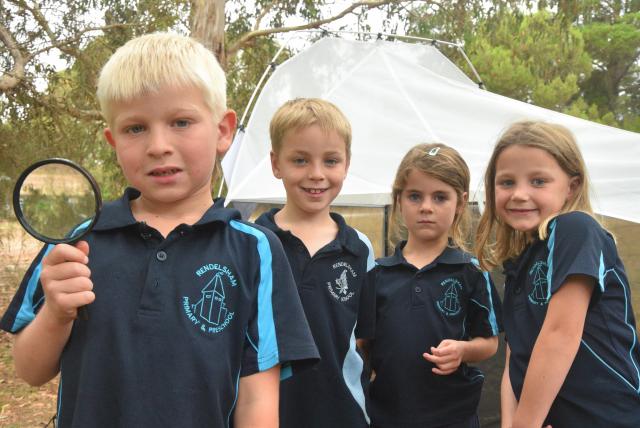
RENDELSHAM Primary and Kingston Community School have been selected as two of 50 schools to participate in a new citizen science project, Insect Investigators, led by the South Australian Museum.
The project will connect the schools’ students with researchers to document their local insect biodiversity and discover insects in their area.
Participating schools are sent a Malaise trap, a tent-like structure that catches flying insects, and students are asked to monitor their findings for a four-week period beginning next week.
Unable to wait until then, students at Rendelsham Primary have already set up their tent.
Rendelsham junior primary teacher, Peta Uotila, said the project has created much excitement among her students.
“It is great the kids get to be part of something so purposeful; they are excited to be able to communicate their results with real scientists,” Ms Uotila said.
“All the children across the school are very inquisitive in nature and their environment, they are always very interested in discovering things.”
The specimens will be sorted, DNA barcoded, and sent to expert scientists who will identify and research the insects to help build on the knowledge of Australia’s insect species.
If any school finds a new species they will be given the opportunity to name the insect themselves.
“The kids have really latched onto the idea of naming a new species themselves,” Ms Uotila said.
“I explained that it may not be likely, but so far this has not dissuaded them.”
Dr Erinn Fagan-Jeffries, project manager, Honorary Researcher at the South Australian Museum and Postdoctoral Fellow with the University of Adelaide, said she has been overwhelmed by the level of interest from schools nationwide.
“We are so excited by the demand for this project, with nearly 200 schools applying for the 50 places,” she said.
“We can not wait to work with students to survey the insects at their school, and maybe even find some new species.”








